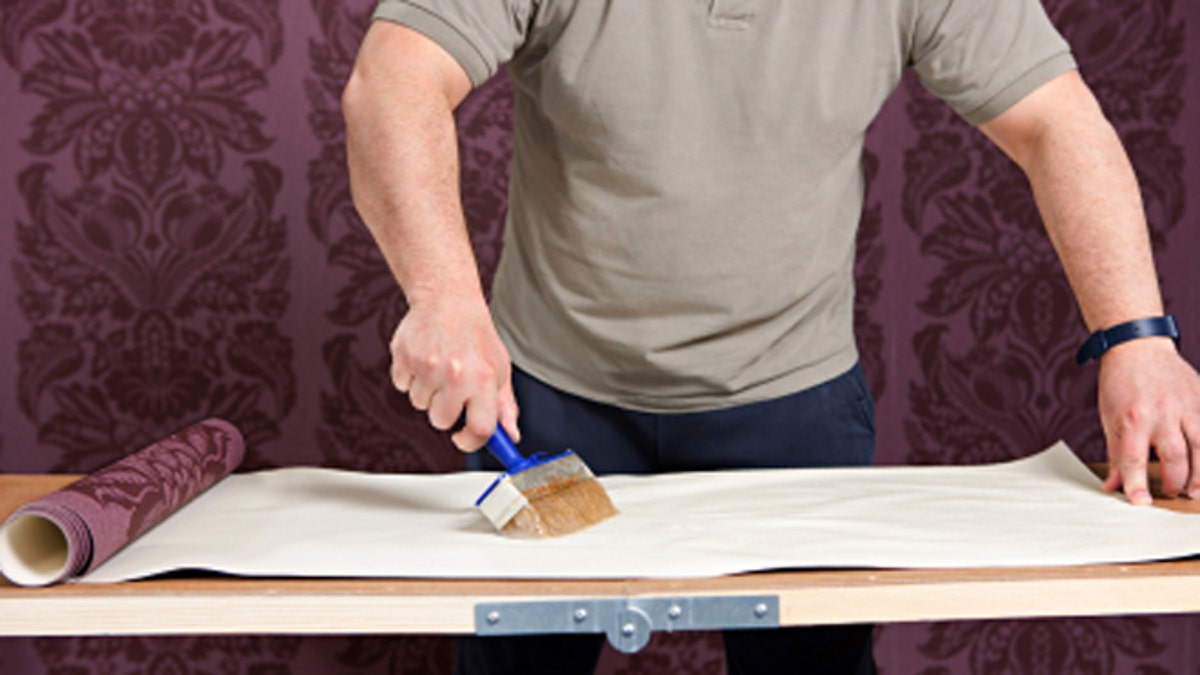
Wallpaper can add character and drama to a room. Doing it yourself requires patience and precision, but, if done correctly, the room's transformation can be worth it. Here are some tips for selecting the right wallpaper and hanging it.
Choosing your wallpaper
According to the National Guild of Professional Paperhangers (NGPP), a proper wallpaper installation can last you 15 to 25 years. The vinyl or acrylic surfaces of wallpaper are generally easier to clean off than painted ones. Skipping the roller in favor of wallpaper saves you the hassle of repainting the room every few years.
And then there is wallpaper's aesthetic appeal.
"Wallpaper is ideal when you want to mix and play with coordinating textures and designs," says Paula Berberian, the creative director of WallPops, which are removable wall decals and stickers from the Randolph, Mass.-based wallpaper company Brewster Home Fashions.
So how do you choose the right kind of wallpaper? Think about how you want the finished room to look and find a type of wallpaper that will make that possible. If you want wallpaper with a pattern, make sure that design will work in the room.
"I tell people to select a wallpaper that speaks to them," Berberian says.
You also need to make some logistical decisions. Do you want to work with prepasted or nonpasted wallpaper? What is the surface area of the area that you want to cover, and how much wallpaper do you need? Home Depot's buying guide for wallpaper and borders suggests checking with a salesperson to determine if you are purchasing enough wallpaper.
Hanging your wallpaper
Once you have picked out your wallpaper, measured the room and purchased the proper materials, check the batch or run number of your rolls. To prevent visible discrepancies, only use wallpaper from the same dye lot.
Before you hang the wallpaper, you should repair any holes and dents. Make sure painted surfaces are clean and smooth. Follow any the directions from the wallpaper and adhesive manufacturer to ensure a successful installation.
Now that your wall is properly cleaned, prepped and dry, draw a vertical line down the wall lightly in pencil. This should be about half an inch closer to the edge of the wall than the width of the wallpaper. Measure and cut your first strip of wallpaper, making sure to add a few inches at the top and bottom. Double check that the patterns will match up from strip to strip. If you are working with nonpasted paper, pour the glue into a paint roller tray and roll glue over the back of the strip and let it cure according to the instructions on the package. If your paper is prepasted, do the same with the paste activator or water. You can also place cut pieces of prepasted wallpaper in a water box to activate the paste.
Fold one end of the strip toward the center, making sure the edges line up. Be careful not to crease the paper. Do the same with the other end. This is called booking, and the pattern side should be on top. Let it sit for the amount of time dictated by the manufacturer's instructions.
Unfold the paper and line it up with the pencil line. Smooth it out with your hands and a wet sponge. Then take your smoothing tool and go over the paper again. Using a straight edge and razor knife to cut away the overhang from the top, bottom and corner. Repeat with the next piece, making sure the edges touch instead of overlapping them and the seams are straight. Lowe's suggests going over each seam with a clean damp sponge to help them set, going over with a seam roller if necessary.